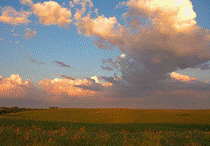
Proceedings of the North American Prairie Conferences
Date of this Version
1989
Document Type
Presentation
Abstract
In 1979 a tallgrass prairie was established in southwestern Ohio; a second prairie , adjacent to the first, was established in 1983 (4-year and 8-year sites). These sites differed in time since establishment, seed source, extent of burning, and extent of soil preparation. Six remnant prairies were also selected for comparison with the established sites. The 8-year site was dominated by switchgrass (Panicum virgatum L.) and indiangrass [Sorghastrum nutans (L.) Nash.], components of the original seed mix, while the 4-year site was dominated by old-field species and big bluestem (Andropogon gerardii Vitman). Both 4-year and 8-year sites were equally similar to native Ohio prairies in terms of species presence, but not in terms of species abundance. Most of the vegetational differences between the established sites were attributed to the source of the seed used in prairie establishment. The seed source also accounted for differences between the study sites and native Ohio sites.


Comments
Published in Prairie Pioneers: Ecology, History and Culture: Proceedings of the Eleventh North American Prairie Conference, August 7-11, 1988, Lincoln, Nebraska (published 1989).